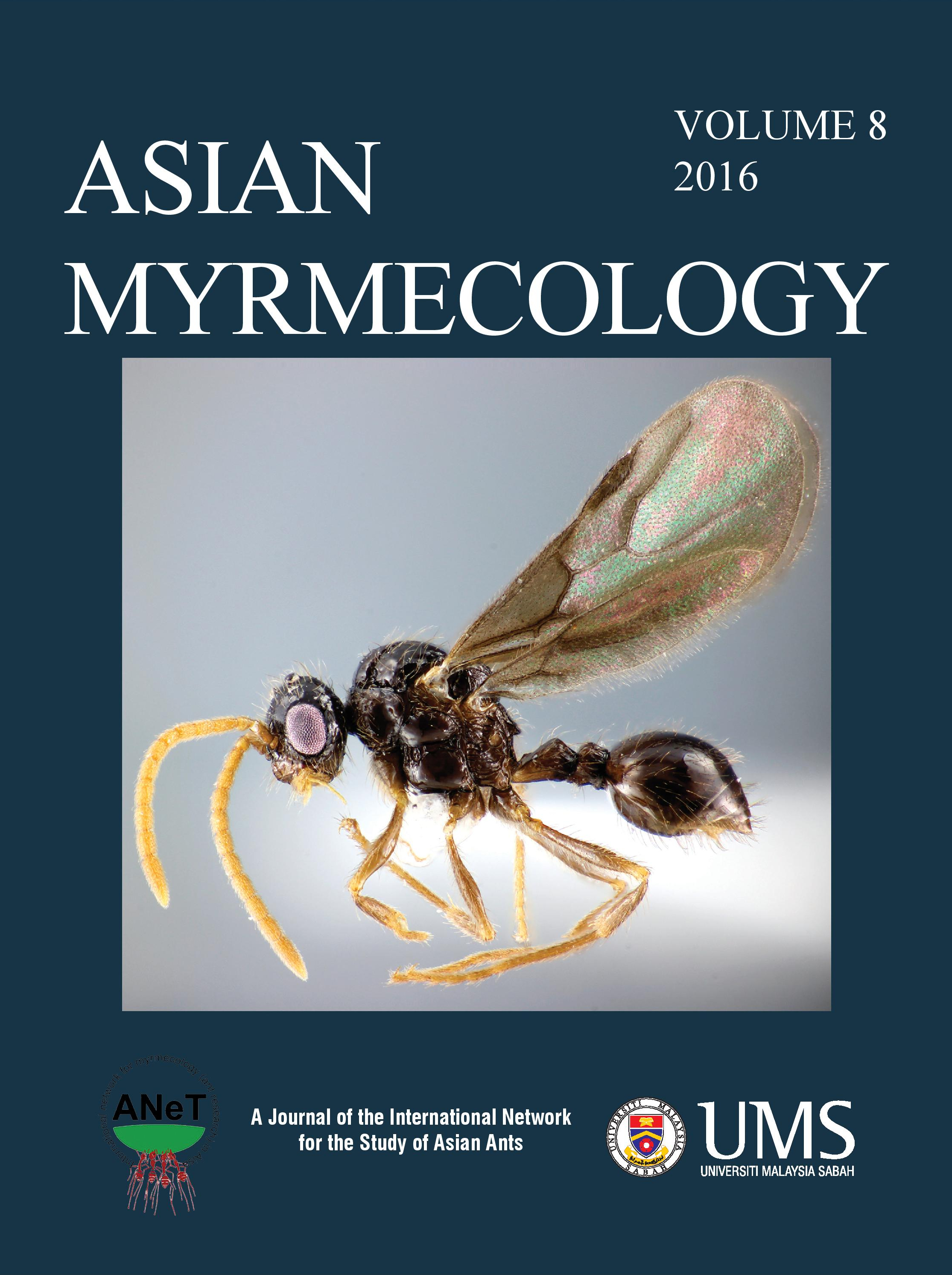ASIAN
MYRMECOLOGY
Image: François Brassard
Ecology and Distribution
Asian Myrmecology, Volume 8, pages 49-56, published December 2016
DOI: 10.20362/am.008005
article first published online: 06/May/2016
Discovery of the Sri Lankan Relict Ant, Aneuretus simoni Emery (Formicidae, Aneuretinae) and the nest density of the species in a selected region of Meethirigala Forest Reserve, Sri Lanka
R. K. S. DIAS* & W. S. UDAYAKANTHA
Abstract:
The sole extant species of Aneuretinae, Aneuretus simoni Emery, forms ground nests in various substrates in wet zone and intermediate zone forests in Sri Lanka. Nests of the species were surveyed outside the previously recorded habitats, in Meethirigala Forest Reserve in Gampaha District. The frequency of occurrence, percentage nest abundance and mean nest density in three localities were investigated by laying 40 quadrats of 0.5 m x 0.5 m at two plots in each locality, and counting the number of nests within each quadrat, from March to July in 2014. Nests of A. simoni were found in only one locality. Higher frequency of occurrence (4/40 to 8/40) than observed for other species was observed for A. simoni in all samples except in June, and the percentage nest abundance ranged from 5.7 to 20.5. The mean nest density of the species was among the highest four on each occasion and was, along with a Pheidole species, significantly higher overall than that of 14 other species. The nest density of A. simoni ranged from 0.2 - 0.8 m-2 from March to July in the forest, and this was higher than that recorded at its other habitats except the Kuluna Kanda Proposed Forest Reserve. The mean nest density of A. simoni had no significant correlation with monthly rainfall. Aneuretus simoni is locally-dominant at an altitude of 57 m in Meethirigala Forest Reserve, which is the lowest elevation record for the species.
Keywords:
Sri Lankan Relict Ant, endemic ants, quadrat sampling for nests, ground ant nests, forest ant fauna
Get PDF (814K):
Department of Zoology and Environmental Management, University of Kelaniya, Sri Lanka
*Corresponding author: rksdias@kln.ac.lk



